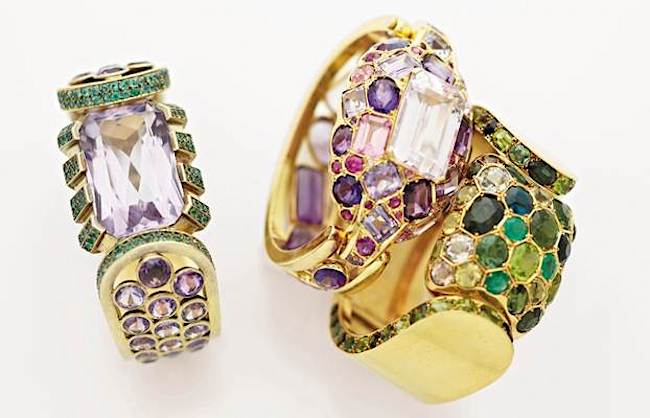In the heady world of Paris between the two world wars, Deco jewelry ruled – which made the bold jewels designed by Juliette Moutard of René Boivin and Suzanne Belperron stand out all the more. Yet they were notably similar to each other.

René Boivin bracelet on the left sold for $245,756 at Christie’s Paris in 2011. Suzanne Belperron’s bracelet with green stones, far right, sold for $330,980, a record price for a Belperron bracelet at the time. These bold bangles were the height of fashion for chic Parisians just before the war.
Bracelet on the left shows how similar the jewels Juliette Moutard designed for René Boivin were to Suzanne Belperron’s at the time. Moutard took over as chief designer at Boivin in 1931, the year Belperron went out on her own, having been the uncredited chief designer for Boivin since 1921.
All three bracelets have the characteristic bold, geometric style and unconventional materials for which the house of René Boivin had become known.
Belperron and Moutard were both rising design stars in the decade before World War II, during which precious gems and metals became difficult to come by – especially in occupied Paris. Fortunately for both, when the war came, they’d already built a design aesthetic around more unique colored stones.
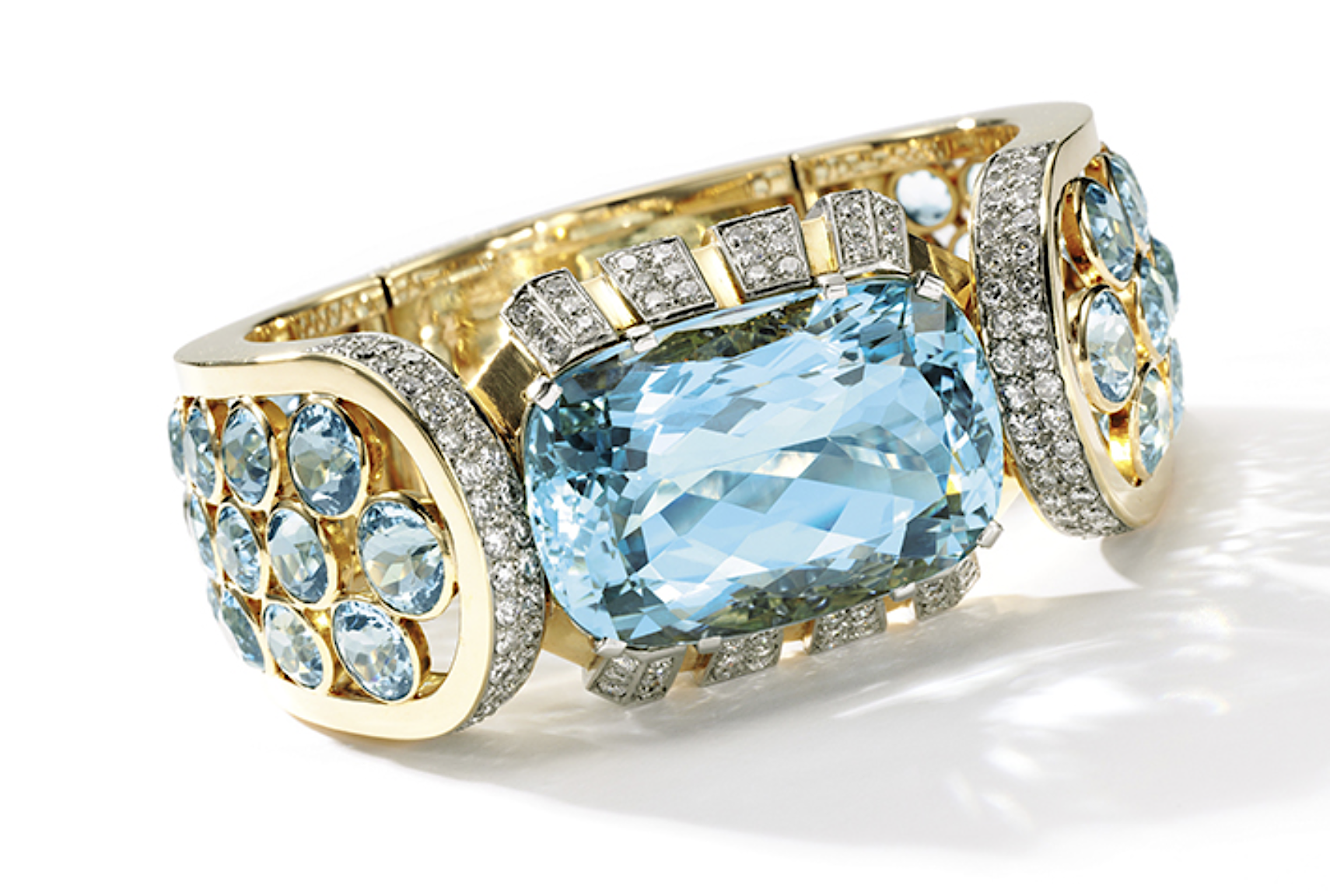
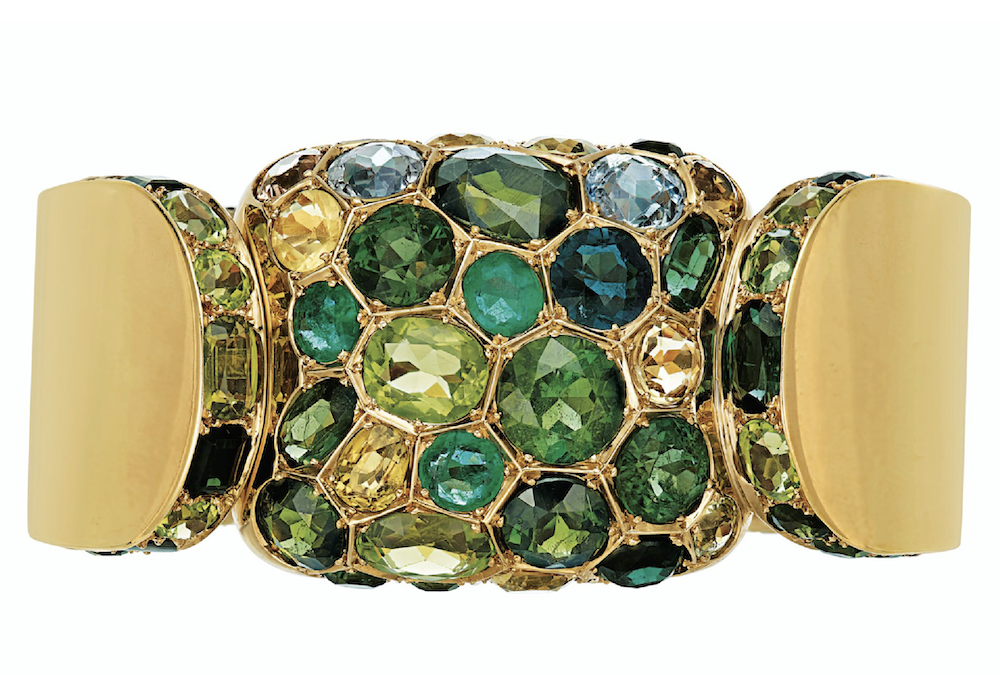
A Belperron bangle similar to the one shown at the top appeared at Christie’s in 2019, made more than two decades later from the same gems. Look closely and you can see it’s a tad bulkier.
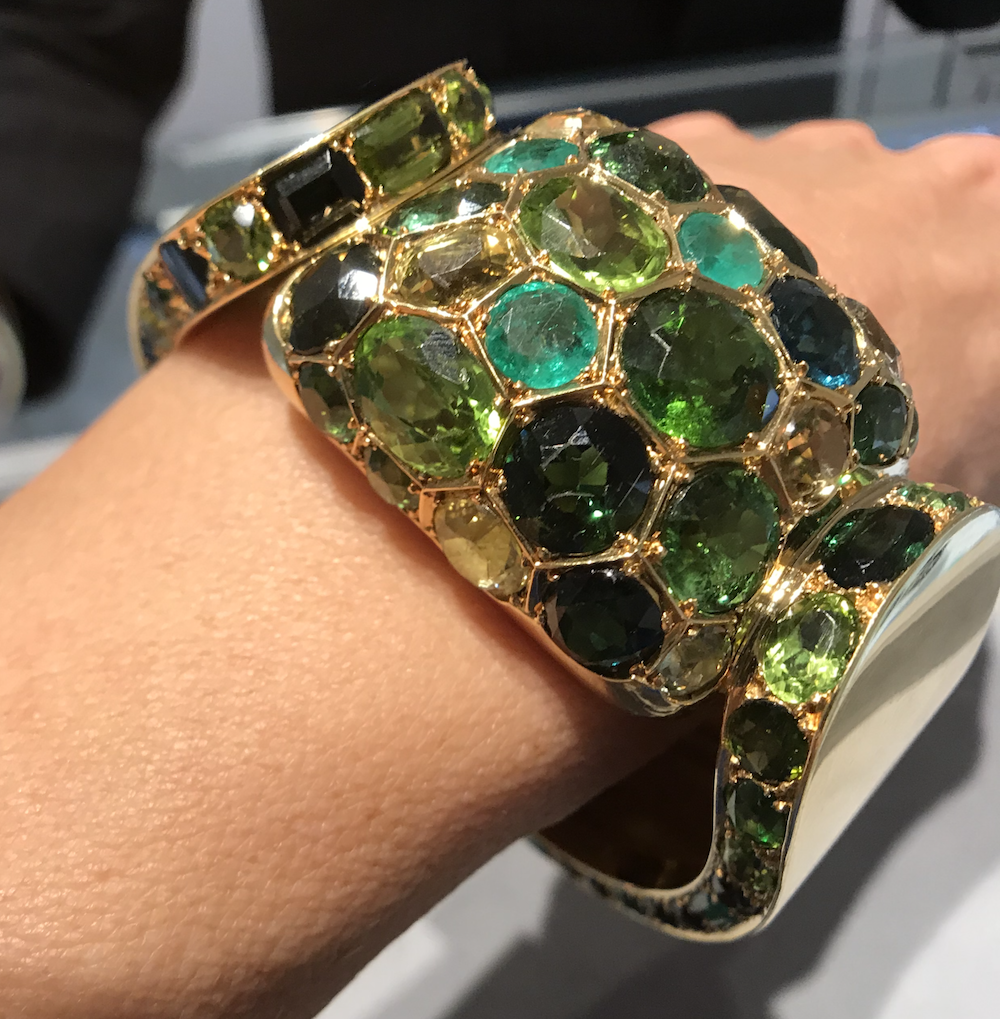
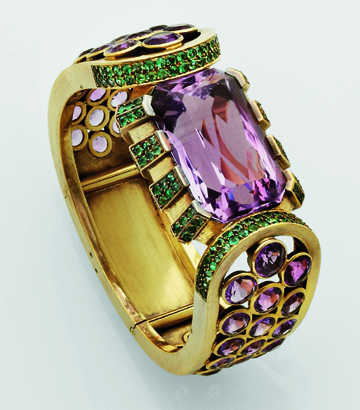
The bracelets shown at the top demonstrate how similar the two designers were working five years after Belperron left Boivin to work as an independent for Bernard Herz.
Like Moutard, Belperron’s career was launched by Jeanne Boivin, who took over the house of René Boivin after her husband’s death in 1917, establishing a legacy for bold innovation. Even though Boivin jewels created in the following decades carry his name, what you’re really seeing is the creative genius of a small group of women.
Soon after designing this bangle (right), Juliette Moutard abandoned that kind of bold, geometric work for a more naturalistic style. Unlike Belperron, who went out on her own, Moutard stayed with Boivin for the rest of her career, well into the 1970s.
Boivin’s daughter Germaine joined the firm as a designer in 1938 and took over running the company after her mother retired. Not many know the name Juliette Moutard, given her jewels carry the mark of René Boivin. Belperron, on the other hand, has become one of the most recognizable and sought after designers of the 20th century.
Related posts:
Women who paved the way: Jeanne Poiret Boivin
Women who paved the way: Suzanne Belperron
Women who paved the way: Jeanne Toussaint of Cartier
Related products (Buying through links on this site does not cost you any more but does add a few cents to the maintenance of this blog):

